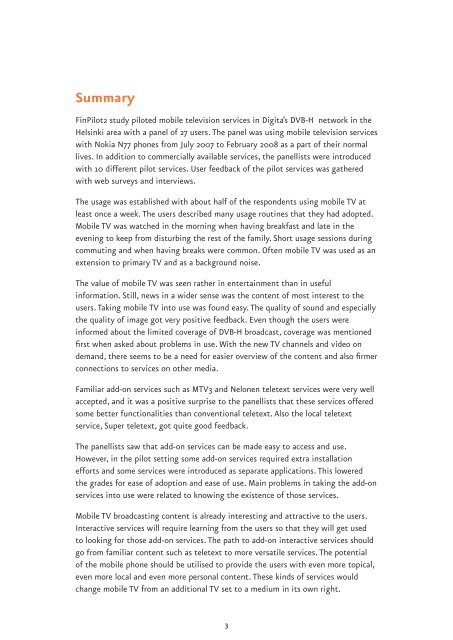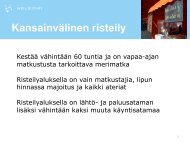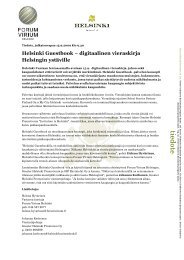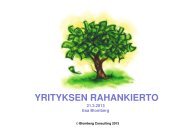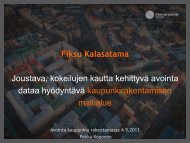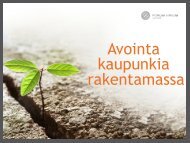FinPilot2 Final Report â User Acceptance of Mobile TV Services ...
FinPilot2 Final Report â User Acceptance of Mobile TV Services ...
FinPilot2 Final Report â User Acceptance of Mobile TV Services ...
Create successful ePaper yourself
Turn your PDF publications into a flip-book with our unique Google optimized e-Paper software.
Summary<br />
<strong>FinPilot2</strong> study piloted mobile television services in Digita’s DVB-H network in the<br />
Helsinki area with a panel <strong>of</strong> 27 users. The panel was using mobile television services<br />
with Nokia N77 phones from July 2007 to February 2008 as a part <strong>of</strong> their normal<br />
lives. In addition to commercially available services, the panellists were introduced<br />
with 10 different pilot services. <strong>User</strong> feedback <strong>of</strong> the pilot services was gathered<br />
with web surveys and interviews.<br />
The usage was established with about half <strong>of</strong> the respondents using mobile <strong>TV</strong> at<br />
least once a week. The users described many usage routines that they had adopted.<br />
<strong>Mobile</strong> <strong>TV</strong> was watched in the morning when having breakfast and late in the<br />
evening to keep from disturbing the rest <strong>of</strong> the family. Short usage sessions during<br />
commuting and when having breaks were common. Often mobile <strong>TV</strong> was used as an<br />
extension to primary <strong>TV</strong> and as a background noise.<br />
The value <strong>of</strong> mobile <strong>TV</strong> was seen rather in entertainment than in useful<br />
information. Still, news in a wider sense was the content <strong>of</strong> most interest to the<br />
users. Taking mobile <strong>TV</strong> into use was found easy. The quality <strong>of</strong> sound and especially<br />
the quality <strong>of</strong> image got very positive feedback. Even though the users were<br />
informed about the limited coverage <strong>of</strong> DVB-H broadcast, coverage was mentioned<br />
first when asked about problems in use. With the new <strong>TV</strong> channels and video on<br />
demand, there seems to be a need for easier overview <strong>of</strong> the content and also firmer<br />
connections to services on other media.<br />
Familiar add-on services such as M<strong>TV</strong>3 and Nelonen teletext services were very well<br />
accepted, and it was a positive surprise to the panellists that these services <strong>of</strong>fered<br />
some better functionalities than conventional teletext. Also the local teletext<br />
service, Super teletext, got quite good feedback.<br />
The panellists saw that add-on services can be made easy to access and use.<br />
However, in the pilot setting some add-on services required extra installation<br />
efforts and some services were introduced as separate applications. This lowered<br />
the grades for ease <strong>of</strong> adoption and ease <strong>of</strong> use. Main problems in taking the add-on<br />
services into use were related to knowing the existence <strong>of</strong> those services.<br />
<strong>Mobile</strong> <strong>TV</strong> broadcasting content is already interesting and attractive to the users.<br />
Interactive services will require learning from the users so that they will get used<br />
to looking for those add-on services. The path to add-on interactive services should<br />
go from familiar content such as teletext to more versatile services. The potential<br />
<strong>of</strong> the mobile phone should be utilised to provide the users with even more topical,<br />
even more local and even more personal content. These kinds <strong>of</strong> services would<br />
change mobile <strong>TV</strong> from an additional <strong>TV</strong> set to a medium in its own right.<br />
3


